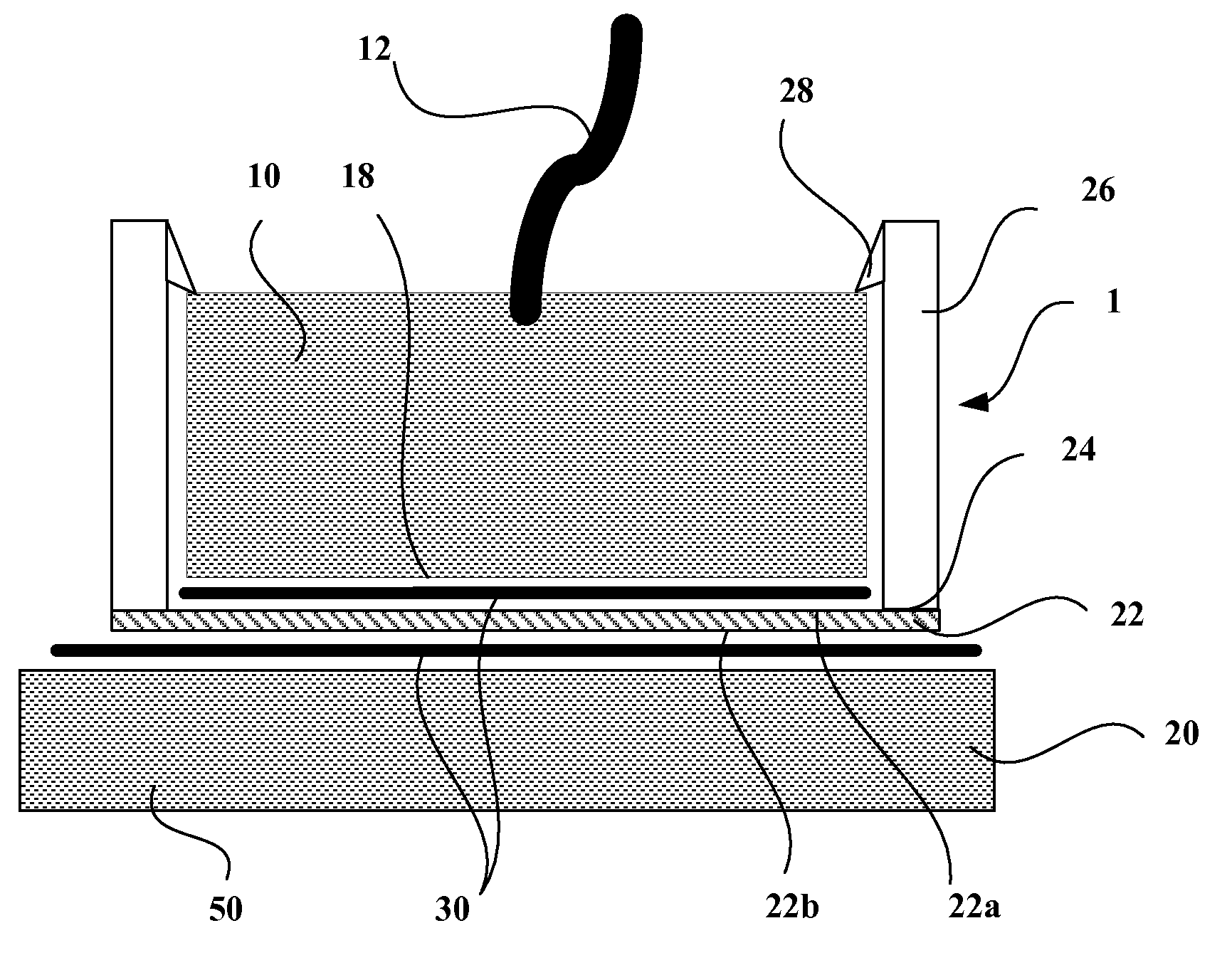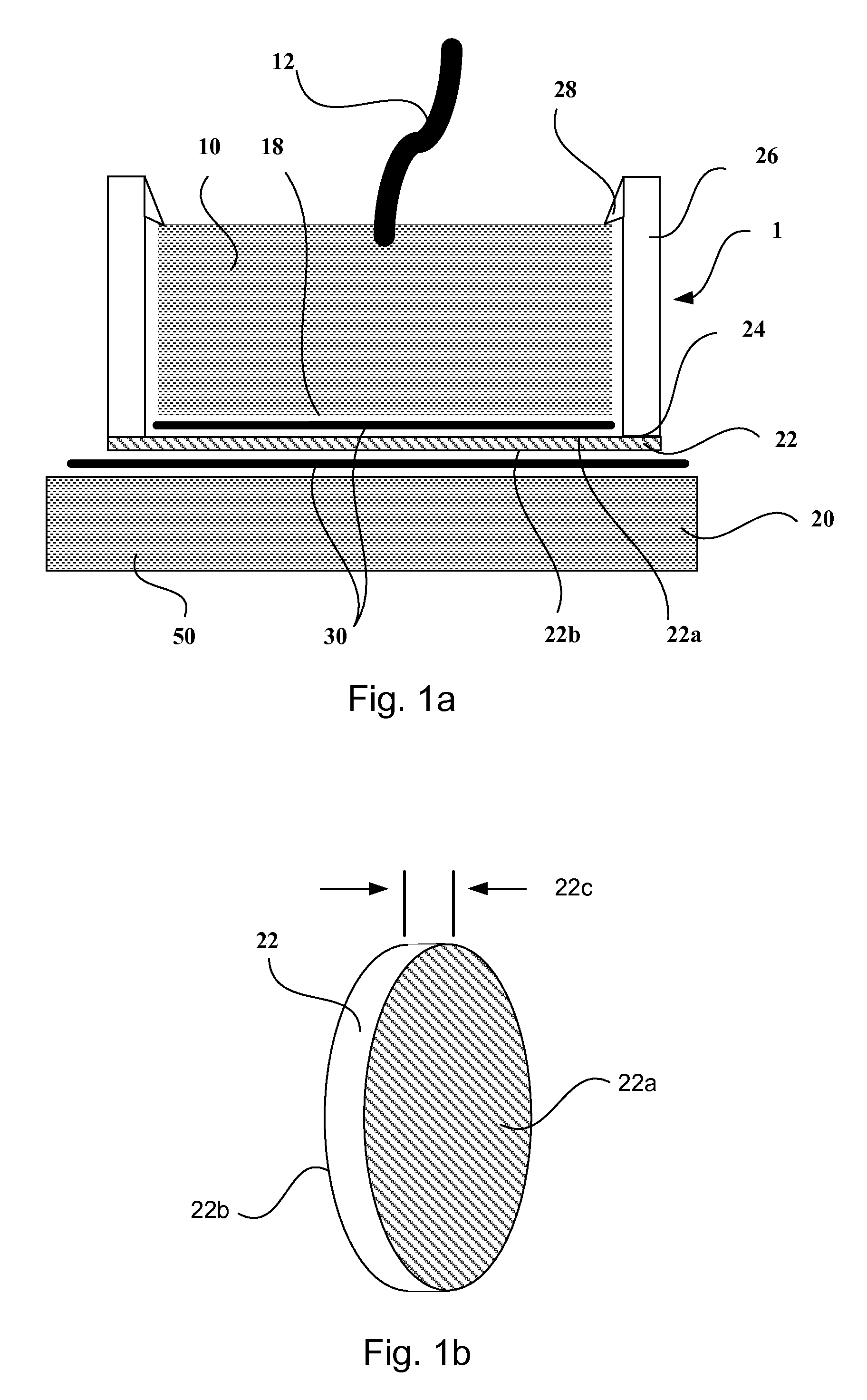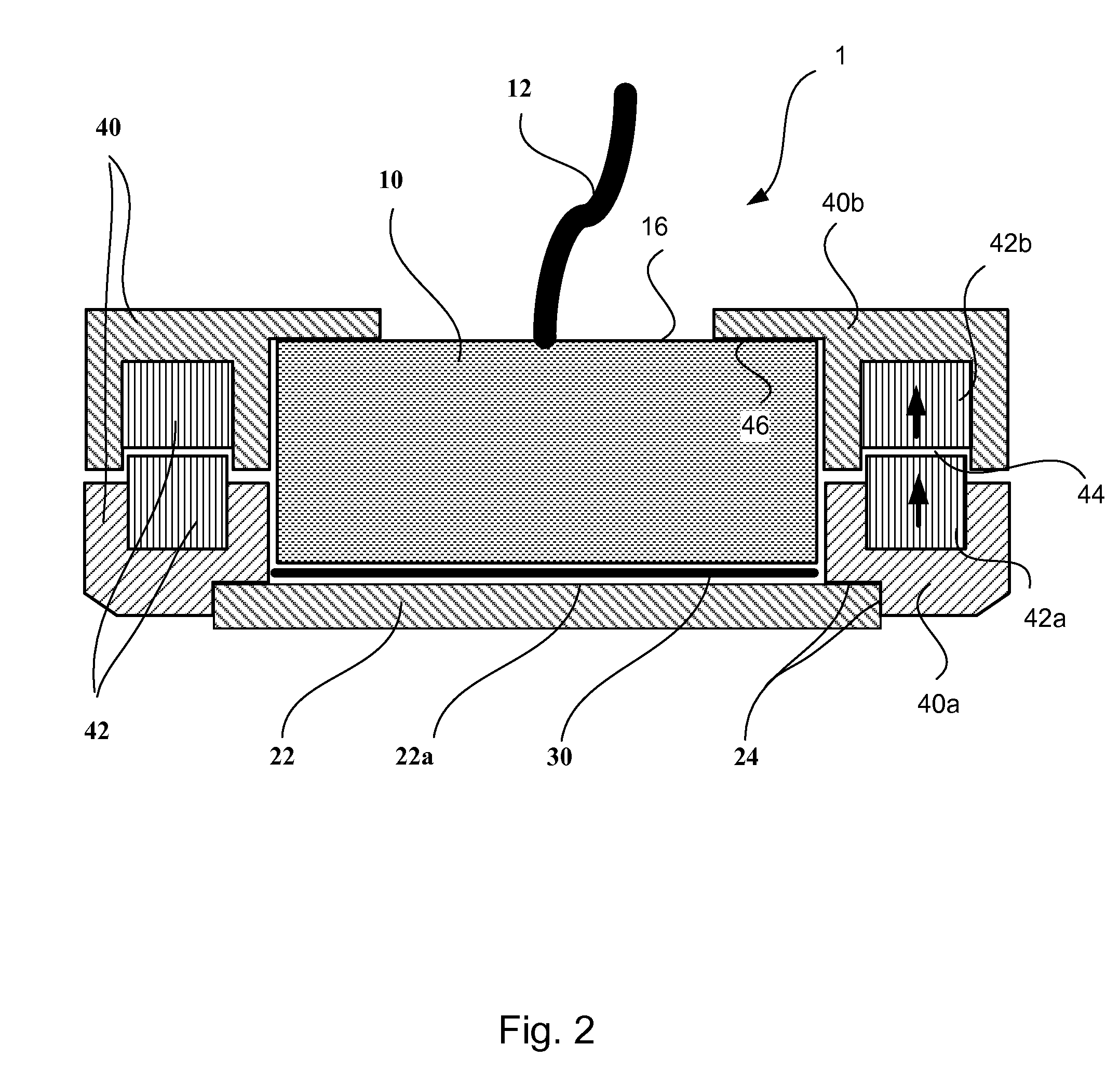Removable wear-plate assembly for acoustic probes
a technology of wear-plate assembly and acoustic probe, which is applied in the direction of fluid pressure measurement, instruments, magnetic property measurement, etc., can solve the problems of expensive repair or replacement, premature wear of the probe contact surface, and loss of time, and achieve the effect of desirable acoustic performan
- Summary
- Abstract
- Description
- Claims
- Application Information
AI Technical Summary
Benefits of technology
Problems solved by technology
Method used
Image
Examples
Embodiment Construction
[0029]Referring to FIG. 1a, a preferred embodiment of an ultrasonic probe 1 according to the present invention is shown. This preferred embodiment is chosen to illustrate herein disclosed ultrasonic probe assembly 1 and is not meant to place any restriction on the scope and variations of the invention.
[0030]As shown in FIG. 1a, probe assembly 1 comprises an ultrasonic probe 10, a probe cable 12, a removable wear plate 22, a wear plate holder 26 and a layer of liquid couplant 30.
[0031]Probe assembly 1, during an inspection operation, is placed on and moved over the surface of a test object 20 to inspect object 20. During the operation, wear plate 22 comes into contact with test object 20 via fluid coupling 30.
[0032]Plate holder 26 preferably further comprises a fastening clip 28 to hold probe 10 to be contained within plate holder 26. Wear plate 22, wear plate holder 26 and fastening clip 28 together forms a housing for probe 10, and are configured to protect probe 10 during operatio...
PUM
| Property | Measurement | Unit |
|---|---|---|
| flexural strength | aaaaa | aaaaa |
| flexural strength | aaaaa | aaaaa |
| tensile strength | aaaaa | aaaaa |
Abstract
Description
Claims
Application Information
 Login to View More
Login to View More - R&D
- Intellectual Property
- Life Sciences
- Materials
- Tech Scout
- Unparalleled Data Quality
- Higher Quality Content
- 60% Fewer Hallucinations
Browse by: Latest US Patents, China's latest patents, Technical Efficacy Thesaurus, Application Domain, Technology Topic, Popular Technical Reports.
© 2025 PatSnap. All rights reserved.Legal|Privacy policy|Modern Slavery Act Transparency Statement|Sitemap|About US| Contact US: help@patsnap.com



